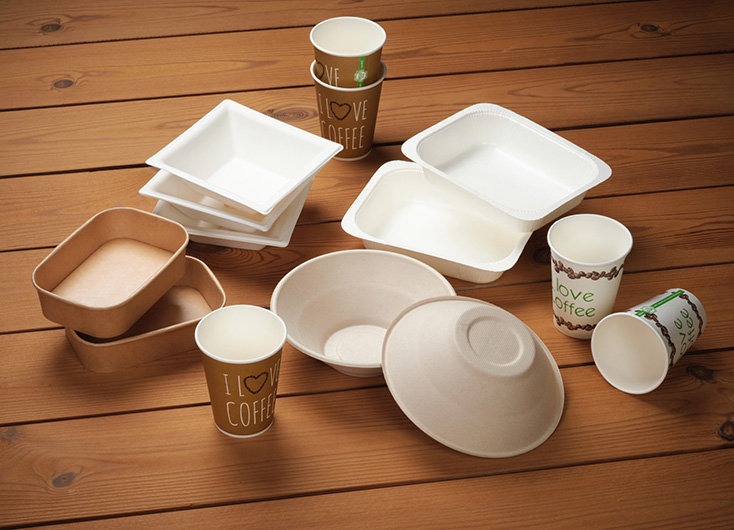More news
- Nigeria’s paint industry navigates regulatory changes and economic challenges amid p...
- Focus on the global coatings market: Global coatings market outlook
- Architectural coatings in Nepal and Bhutan
- Market report: Benelux paint market going strong despite challenges
- Market report: India’s automotive coatings industry continues to enjoy upward trajec...

Microfibrillated cellulose (MFC) is produced by stripping away the outer layer of fibres from cellulose by the process of mechanical shearing. These fibres are eco-friendly and renewable in nature, which are the primary characteristics that promote their sales in different sectors.
Microfibrillated cellulose is extensively used for two major areas of application, including barrier films and as a performance enhancer, in roles such as strengthening agents, rheology modifiers, and thickening agents.
Expanding at an astronomical 14% CAGR from 2023 to 2033, the global microfibrillated cellulose fibre market is forecast to reach US$835M by 2033, up from US$225M in 2023.
Growing use of MFC as a sustainable substitute for plastic is forecast to be a common trend that is empowering market development on a global scale. The imposition of stringent mandates to eliminate the use of VOCs (volatile organic compounds) and single-use plastic bans are also projected to boost demand for cellulose microcrystalline fibres and cellulose nanocrystalline fibers going forward.
High demand
“Growing Focus on Sustainability Creating New Market Opportunities”
With the threat of climate change and environmental degradation looming over the world, sustainability initiatives have driven up demand for MFC. The primary benefit of using microfibrillated cellulose fibre is that it can bolster strength and reduce the weight of fibre materials sustainably, by generating end products with reduced material volumes, without compromising on performance.
For instance, as per a Weidmann report, incorporation of 1% of MFC can account for up to 20% of product performance improvements. The report also states oxygen transmission rates of 4 to 10mL/m2day, and a moisture transfer rate as low as 0.4 g/m2day for MFC-based films.
READ MORE:
Market report: Energy crisis dominates South African industry but long-term outlook is positive
Country-wise insights
The world is an oyster for microfibrillated cellulose fibre companies at the moment as everyone is focusing on sustainability to save the environment. Investing in China, the United States, and Nordic countries would be the best bet for new as well as established microfibrillated cellulose fibre brands.
Where should microfibrillated cellulose fibre suppliers invest in Europe?
“Nordic Countries to Emerge as Moneymaking Markets”
- In Europe, Nordic countries are leading the demand for microfibrillated cellulose fibre and are estimated to account for nearly half of the region’s share by the end of the study period.
- Norway leads the charge in Europe when it comes to microfibrillated cellulose fibre shipments, which are estimated to account for a little less than half of the share of the market of all the Nordic countries combined.
- Returnable packaging systems have been a part of Norway’s businesses since the early 1900s. However, refillable glass and PET packaging was stopped in 2014.
Which Asian country is the most bankable market?
“China to Bring in More Revenue Than Any Other Asian Country”
China is currently the leading microfibrillated cellulose fibre market in the Asia Pacific region excluding Japan. Sales of microfibrillated cellulose fibre in China are forecast to rise at a stellar 19% CAGR from 2023 to 2033. The National Development and Reform Commission (NDRC) of the People’s Republic of China issued a ban on the usage of non-degradable plastic bags, single-use plastics and packaging plastics in January 2020.
What makes the United States an opportune market?
“High Focus on Incorporating Sustainable Practices”
As per the Fact.MR report, North America is second only to the leading regional market for MFC fibre.
More than 90% of microfibrillated cellulose fibre sales revenue of the North American regional market is estimated to come from the United States by 2033-end. Just like all other countries in the world, the United States is also focusing on eliminating plastics and other toxic products from the packaging sector, which is projected to uplift demand for natural cellulose fibre products. Growing consumer awareness regarding sustainability is also estimated to bolster the use of sustainable cellulose fibres in different industry verticals in the country.
Category-wise Insights
Which application will lead market growth in the future?
“Use of MFC as Performance Enhancer to Be Popular”
Microfibrillated cellulose is extensively used for two major areas of application, including barrier films and as a performance enhancer, in roles such as strengthening agents, rheology modifiers, and thickening agents. Demand for MFC as a performance enhancer accounts for a prominent share of the global market at present.
Where will microfibrillated cellulose fibre demand flourish?
“Packaging Sector to Lead Revenue Generation through 2033”
The packaging industry is extrapolated to hold the lead when it comes to global microfibrillated cellulose fibre sales, which is set to be around 40% by the end of 2033.
In May 2023, the Confederation of Paper Industries (CPI), announced the launch of a new service to evaluate the recyclability of fibre-based packaging goods and materials. The new assessment and certification called Papercycle features an online tool for users to evaluate their products.
For more information, visit www.factmr.com







